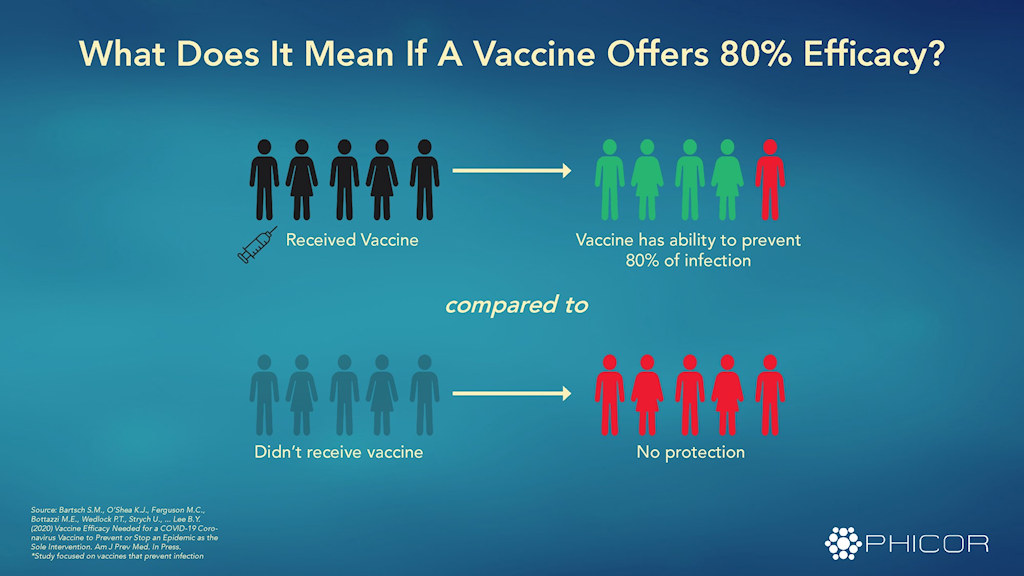August 26, 2020 -- Will the arrival of a COVID-19 vaccine be enough to allow society to go "back to normal" in the near future? The answer to that question depends on a wide range of variables, such as how effective the vaccine is and how many people get vaccinated, according to an article published in the American Journal of Preventive Medicine on August 25.
There is an urgent need for vaccines as a preventative measure against the continuing global COVID-19 pandemic. However, as vaccine development rapidly progresses, it is not clear how effective vaccines will have to be to eliminate the need for social distancing, mask wearing, and limits on interpersonal gatherings.
Previous research has made it clear that determining vaccine efficacy thresholds -- the probability of preventing infection -- early in development is important to maximize the benefit to the entire population. With 203 COVID-19 vaccines under development and 26 already in clinical testing phases (six in phase III trials as of August 25), efficacy thresholds can help determine the best candidate -- the vaccines that can prevent or eliminate disease versus those that can reduce the impact of a disease. Efficacy can also help guide resource allocation and manage expectations once each vaccine reaches the market.
Researchers from City University of New York (CUNY) sought to establish goals for vaccine efficacies needed to prevent and extinguish COVID-19 by developing a computational transmission, clinical outcomes, and economic outcomes model that represents the U.S. population. The model approximates how people interact with each other as well as how this might contribute to the spread of SARS-CoV-2, and the potential health and economic outcomes.
In the model, each vaccinated individual who comes into contact with an infected person becomes exposed. When the vaccine prevents infection that individual moves into the immune state. When the vaccine is not effective, the individual moves into the infected with no symptoms or infected with symptoms state -- both can transmit to others. Clinical outcomes are predicted on an age-specific basis.

The goal of the study was to identify vaccine efficacy thresholds above which vaccination could prevent a wave of the current COVID-19 epidemic or extinguish an ongoing wave of the epidemic across a wide range of scenarios. This would provide a spectrum of possibilities if social distancing measures were completely relaxed.
The initial model -- in which no vaccination was implemented -- resulted in a range of 280-312 million cases of SARS-CoV-2. In models where vaccination is implemented, the results show how vaccine efficacy and coverage (vaccinated individuals plus those otherwise immune) can reduce the size of peak infection (maximum number of daily SARS-CoV-2 infections).
The researchers found that vaccine efficacy must be at least 60% to reduce infection when vaccination coverage is 100%. The threshold rises to over 80% when coverage drops to 60%. When vaccination coverage drops below 50% of the population, a vaccine is no longer able to eliminate the peak.
The team also evaluated a set of scenarios where a vaccine would be rolled out during various points in an epidemic. After 5% of the population has already been exposed, a vaccine efficacy threshold of 80% when coverage is 75% of the population can reduce the peak by only 86%. When 15% of the population has already been exposed, the peak reduction is at most 65% with a vaccine efficacy threshold of 80% and 75% coverage.
The authors noted that achieving 75% vaccination coverage is not an easy feat, as recent polls show only a small percentage of Americans would take a vaccine as soon as it was ready, with most preferring to wait to receive assurances that the vaccine is safe. Therefore, it is likely that a vaccine alone will not allow everything to return to normal unless both vaccine efficacy and vaccination coverage are fairly high.
"Some are pushing for a vaccine to come out as quickly as possible so that life can 'return to normal,'" said Dr. Bruce Y. Lee, lead investigator and a professor of health policy and management at the CUNY Graduate School of Public Health and Health Policy. "However, we have to set appropriate expectations. Just because a vaccine comes out doesn't mean you can go back to life as it was before the pandemic. It is important to remember that a vaccine is like many other products - what matters is not just that a product is available, but also how effective it is."
Do you have a unique perspective on your research related to epidemiology or infectious diseases research? Contact the editor today to learn more.
Copyright © 2020 scienceboard.net


